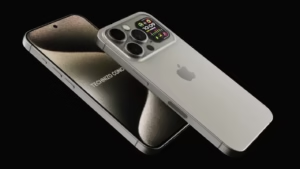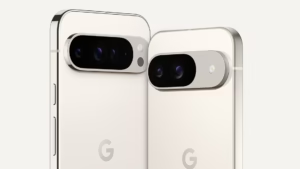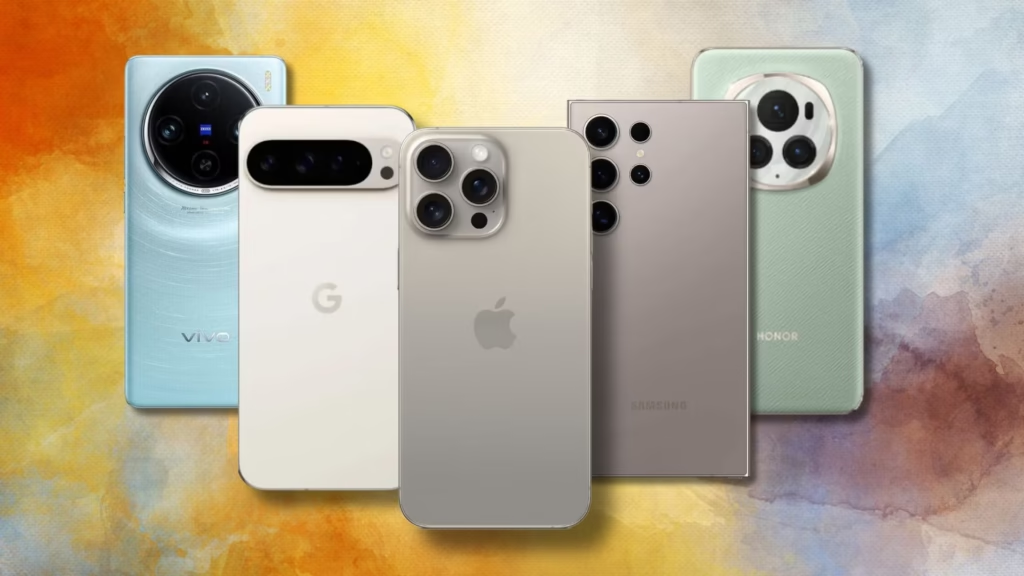The Ultimate Guide to Camera Phones for Photography Enthusiasts in 2025
Remember when smartphone cameras were just a convenient alternative to “real” cameras? Those days are long gone. Today’s flagship phones pack enough photography punch to make even seasoned photographers do a double-take. As someone who’s spent countless hours testing and comparing smartphone cameras, I’m excited to guide you through the best camera phones that are revolutionizing mobile photography in 2025.
Why Trust This Guide?
Before we dive into our top picks, let’s address what makes a great camera phone. Modern smartphones combine cutting-edge hardware with sophisticated AI and computational photography to deliver stunning results. I’ve tested these devices in various conditions – from challenging low-light scenarios to bright daylight shoots – to bring you real-world insights rather than just specs on paper.
Our Top Picks for 2025
1. Samsung Galaxy S25 Ultra: The All-Round Champion

If there’s one phone that exemplifies how far mobile photography has come, it’s the Galaxy S25 Ultra. Samsung has outdone itself with its 200MP main sensor, but it’s not just about the numbers.
What Makes It Special:
- Revolutionary AI-enhanced image processing
- Exceptional low-light performance
- Versatile focal length range
- Pro-grade manual controls
Best For: Photography enthusiasts who want the most versatile camera system without compromise.
2. iPhone 16 Pro Max: The Consistency King

Apple’s approach to mobile photography has always been about consistency, and the iPhone 16 Pro Max continues this tradition while pushing boundaries.
Standout Features:
- Incredible dynamic range
- Natural color reproduction
- Superior video capabilities
- Seamless ProRAW integration
Best For: Content creators who need reliable performance across photos and videos.
3. Google Pixel 9 Pro: The Software Maven

Google’s computational photography prowess shines through in the Pixel 9 Pro. It’s amazing what this device can do with its hardware through clever software optimization.
Key Highlights:
- Industry-leading night photography
- Magic Eraser and other AI tools
- True-to-life color science
- Excellent portrait mode
Best For: Those who appreciate clean, natural-looking photos with minimal editing needed.
Comparison Table: Flagship Camera Phones 2025
| Model | Main Camera | Zoom Capability | Special Features | Best Use Case |
|---|---|---|---|---|
| Galaxy S25 Ultra | 200MP | 10x optical | Advanced AI, Pro Mode | All-round photography |
| iPhone 16 Pro Max | 48MP | 5x optical | ProRAW, Cinematic Mode | Professional content creation |
| Pixel 9 Pro | 50MP | 5x optical | Magic Eraser, Night Sight | Computational photography |
| Xiaomi 14 Ultra | 50MP | 5x optical | Leica optimization | Professional-style shots |
| Sony Xperia 1 VI | 48MP | 3.5x optical | Alpha camera UI | Manual control enthusiasts |
Budget-Friendly Options That Pack a Punch || Camera Phones
Not everyone needs to spend flagship money to get great photos. Here are some impressive mid-range options:
Google Pixel 7a: The Value Champion
Still delivering impressive results thanks to Google’s software magic, the Pixel 7a proves you don’t need to break the bank for great photos.
Realme GT Master Edition: The Hidden Gem
Offering excellent value with a capable camera setup that performs well above its price point.
Understanding Camera Phones Features
Let’s break down what matters when choosing a camera phone:
Megapixels Aren’t Everything
While the Samsung S25 Ultra’s 200MP sensor sounds impressive (and it is), remember that megapixels are just one piece of the puzzle. Sensor size, lens quality, and image processing play equally important roles.
The Power of Computational Photography
Modern smartphones use advanced AI and multiple exposures to create images that would be impossible with hardware alone. This is why a phone with “lower specs” can sometimes outperform ones with more impressive numbers.
Pro Tips for Smartphone Photography
- Master Your Phone’s Pro Mode Don’t be afraid to venture beyond auto mode. Understanding manual controls can transform your photography.
- Embrace HDR, But Know Its Limits While HDR can work wonders, sometimes a more natural look might better suit your subject.
- Learn Your Phone’s Sweet Spots Every camera system has optimal conditions – knowing these helps you get the best results consistently.
FAQs: Your Camera Phone Questions Answered
Q: Are camera phones replacing traditional cameras? A: While they haven’t completely replaced DSLRs or mirrorless cameras, flagship phones have become viable alternatives for many photography scenarios. Each tool has its place, and many photographers now use both.
Q: How important is stabilization in a camera phone? A: Extremely important, especially for low-light photography and video recording. Look for phones with optical image stabilization (OIS) for the best results.
The Bottom Line || Camera Phones
The best camera phone for you depends on your specific needs and budget. For the ultimate versatility and feature set, the Samsung Galaxy S25 Ultra leads the pack. If you prioritize consistency and video capabilities, the iPhone 16 Pro Max won’t disappoint. And for those who want computational photography magic, the Pixel 9 Pro remains a stellar choice.
Remember, the best camera is the one you have with you, and these phones ensure you’ll always have a capable shooter in your pocket.



